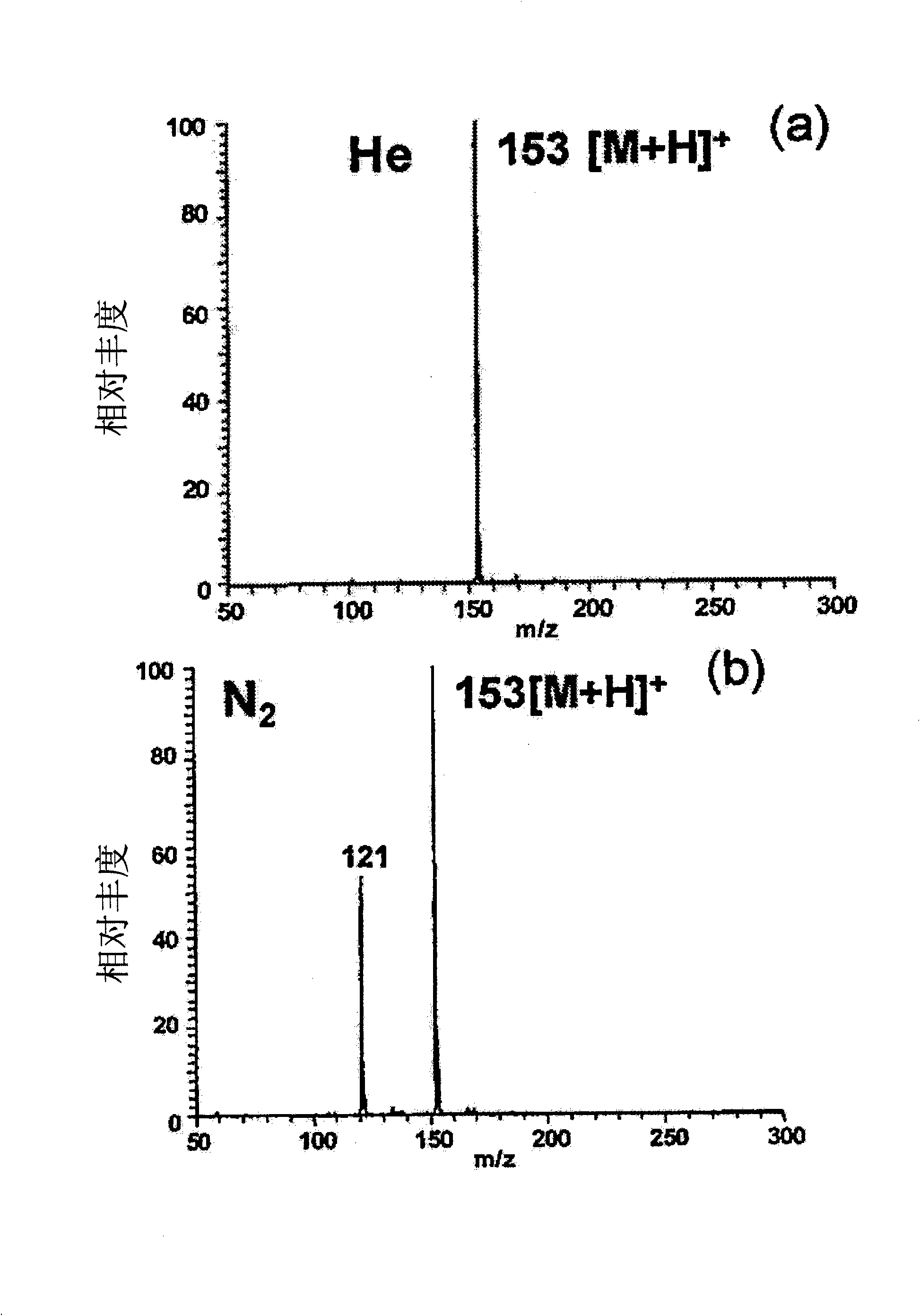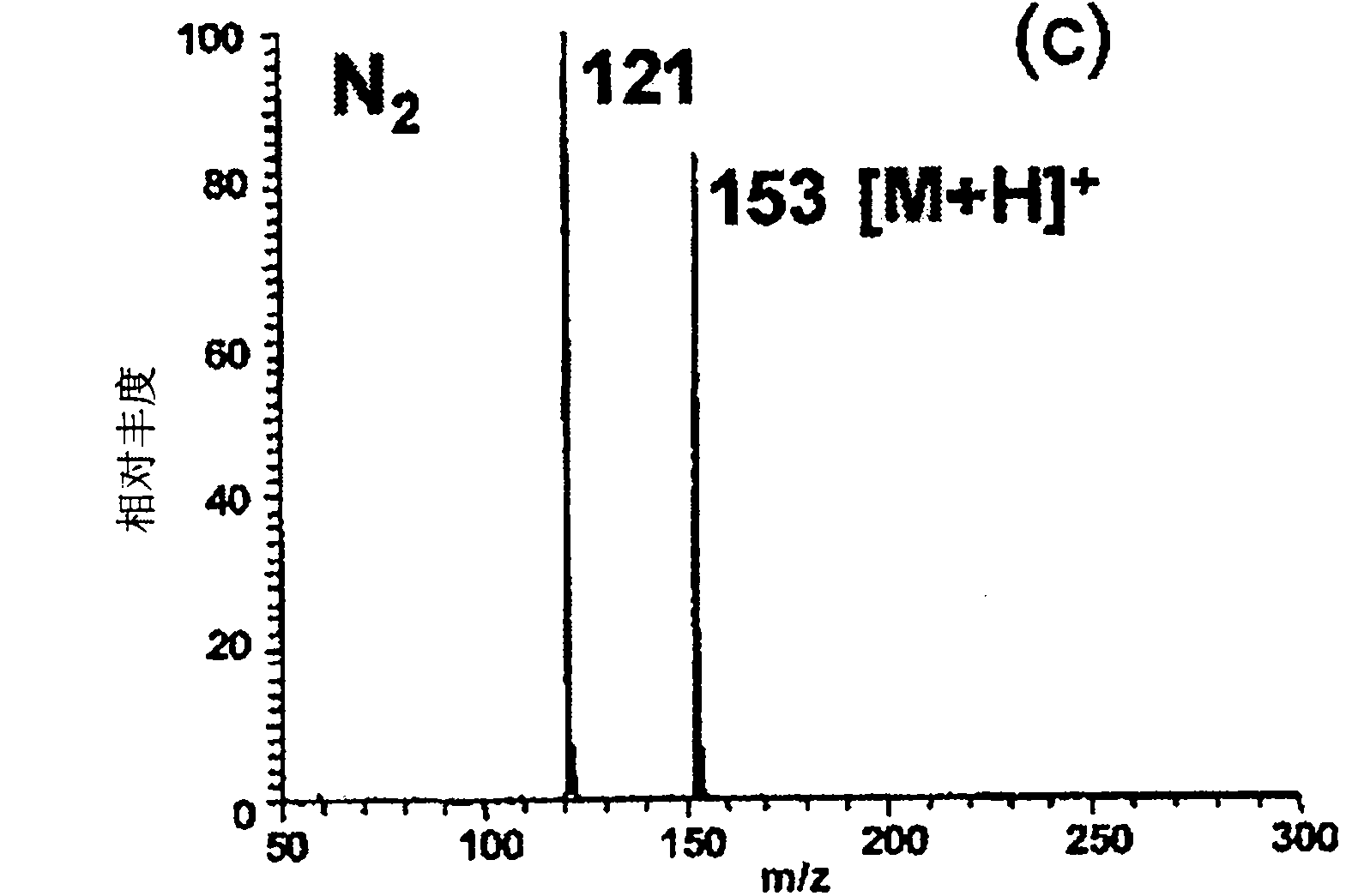Low temperature plasma probe and methods of use thereof
A low-temperature plasma and probe technology, applied in the field of ion probes, can solve problems such as unsatisfactory in-situ application, and achieve the effects of light weight, cost saving and portability
- Summary
- Abstract
- Description
- Claims
- Application Information
AI Technical Summary
Problems solved by technology
Method used
Image
Examples
Embodiment 1
[0082] Example 1: LTP Probe Instrument
[0083] The LTP probe consists of a housing containing a glass tube (O.D.: 6.35mm, I.D.: 3.75mm) with an axially central electrode (stainless steel, diameter: 1.57mm) and an outer electrode (copper tape) surrounding the outside of the tube . When an AC high voltage is applied to the outer electrodes and the center electrode is grounded, a dielectric barrier discharge area is formed.
[0084] A discharge gas is fed through the tube of the probe and used as a source of reagent ions - electrons, free radicals, excited neutrons and metastable species. figure 1 A diagram of the LTP probe instrument. The probe is powered by a custom power supply with variable frequency and voltage. In this power supply, a square wave with adjustable frequency and amplitude is formed by a digital circuit. The square wave is then amplified using a power amplifier and the ignition coil of a motor vehicle internal combustion engine. Typical excitation voltage...
Embodiment 2
[0086] Example 2: Construction of an LTP probe with a mass spectrometer
[0087]The data for the examples herein were obtained using a Thermo LTQ linear ion trap mass spectrometer (Thermo Scientific, San José, CA, USA) tuned for optimal detection of the analyte precursor ions. Data were acquired by the instrument's Xcalibur software. LTP-MS analysis of the investigated compounds was performed in positive and negative ion modes. Set up the instrument to collect spectra in automatic gain control mode with a maximum ion trap injection time of 200 ms and 2 microscans per spectrum. The main experimental parameters used are as follows: m / z range 150-600; ion spray voltage: 4.5 kV; capillary temperature: 200°C; tube lens (tube len) (V): -65V; capillary voltage: -15V. Tandem mass spectrometry (MS / MS) is performed using collision-induced dissociation (CID) to confirm the presence or absence of a particular chemical in a sample of interest. These tests were performed using an isolati...
Embodiment 3
[0088] Example 3: Chemical properties of LTP
[0089] It was observed that the energies involved in LTP ionization and desorption varied over a wide range and complex chemical processes occurred. As an example, by LTP and using He or N 2 Methyl salicylate vapor in the air was ionized as a discharge gas, and different degrees of fragmentation were observed ( figure 2 Panels A and B in ).
[0090] Only use N 2 Fragment ion m / z 121 was not observed with He, in which case LTP is thought to provide the metastable species with the highest internal energy. This suggests that other mechanisms besides Penning ionization may be involved. Use H3O + The proton transfer is also not expected to produce such results, where H3O + It is produced by Penning ionization of water in air. Collisions of ions at atmospheric pressure might have caused this, or another hypothesis might have been by involving N 2 + or O 2 + Ionization occurs due to charge transfer (Leveille, V.; Coulombe, S....
PUM
 Login to View More
Login to View More Abstract
Description
Claims
Application Information
 Login to View More
Login to View More - Generate Ideas
- Intellectual Property
- Life Sciences
- Materials
- Tech Scout
- Unparalleled Data Quality
- Higher Quality Content
- 60% Fewer Hallucinations
Browse by: Latest US Patents, China's latest patents, Technical Efficacy Thesaurus, Application Domain, Technology Topic, Popular Technical Reports.
© 2025 PatSnap. All rights reserved.Legal|Privacy policy|Modern Slavery Act Transparency Statement|Sitemap|About US| Contact US: help@patsnap.com



